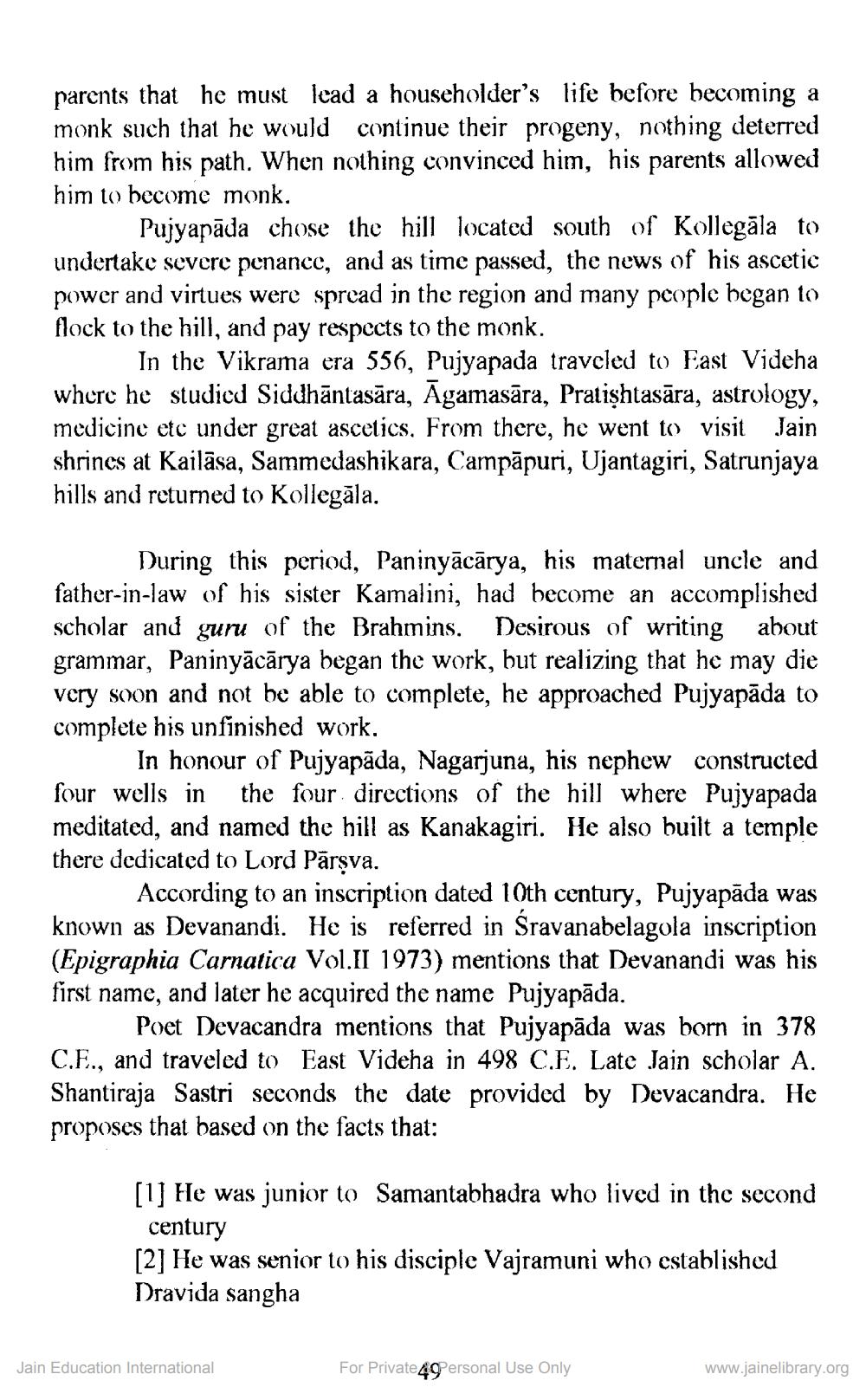________________
parents that he must lead a householder's life before becoming a monk such that he would continue their progeny, nothing deterred him from his path. When nothing convinced him, his parents allowed him to become monk.
Pujyapāda chose the hill located south of Kollegāla to undertake severe penance, and as time passed, the news of his ascetic power and virtues were spread in the region and many people began to flock to the hill, and pay respects to the monk.
In the Vikrama era 556, Pujyapada traveled to East Videha where he studied Siddhāntasāra, Āgamasāra, Pratishtasāra, astrology, medicine etc under great ascetics. From there, he went to visit Jain shrines at Kailāsa, Sammedashikara, Campāpuri, Ujantagiri, Satrunjaya hills and retumed to Kollegāla.
During this period, Paninyācārya, his maternal uncle and father-in-law of his sister Kamalini, had become an accomplished scholar and guru of the Brahmins. Desirous of writing about grammar, Paninyācārya began the work, but realizing that he may die very soon and not be able to complete, he approached Pujyapāda to complete his unfinished work.
In honour of Pujyapāda, Nagarjuna, his nephew constructed four wells in the four directions of the hill where Pujyapada meditated, and named the hill as Kanakagiri. He also built a temple there dedicated to Lord Pārşva.
According to an inscription dated 10th century, Pujyapāda was known as Devanandi. He is referred in Sravanabelagola inscription (Epigraphia Carnatica Vol.II 1973) mentions that Devanandi was his first name, and later he acquired the name Pujyapāda.
Poet Devacandra mentions that Pujyapāda was born in 378 C.E., and traveled to East Videha in 498 CE. Late Jain scholar A. Shantiraja Sastri seconds the date provided by Devacandra. He proposes that based on the facts that:
[1] He was junior to Samantabhadra who lived in the second
century [2] He was senior to his disciple Vajramuni who established Dravida sangha
Jain Education International
For Private 49ersonal Use Only
www.jainelibrary.org




